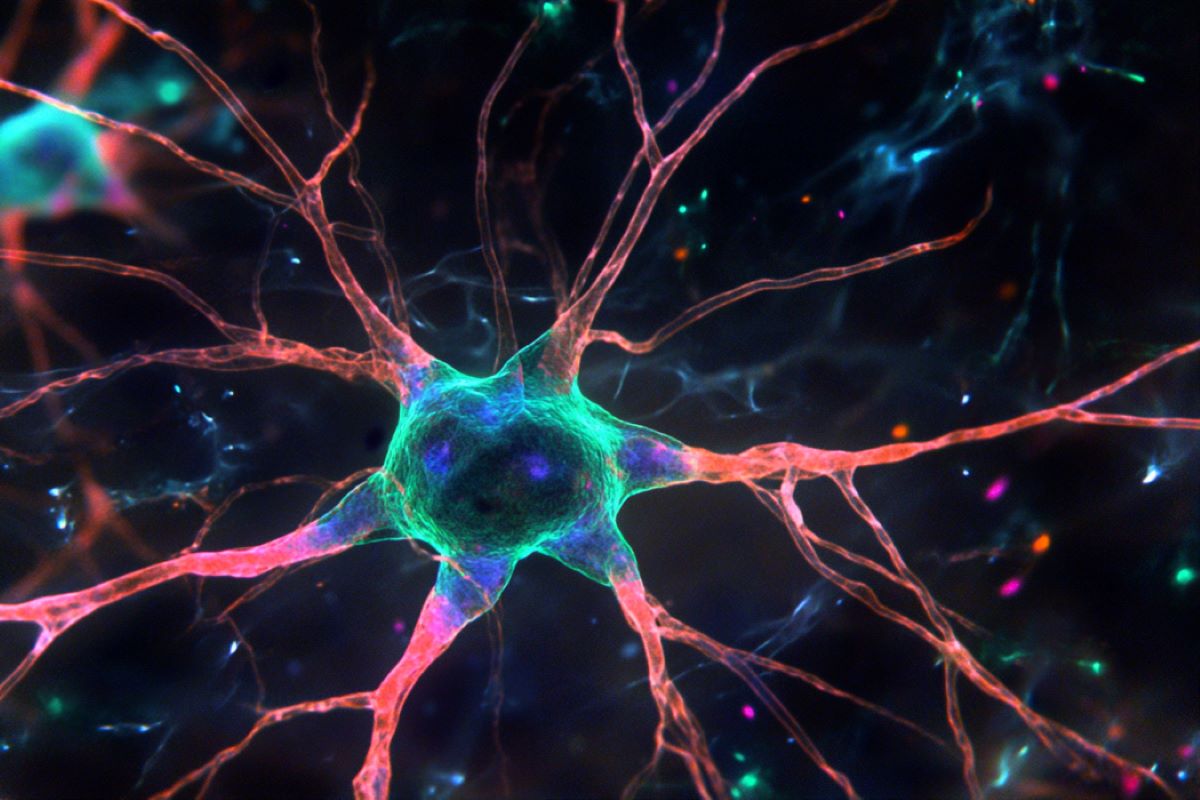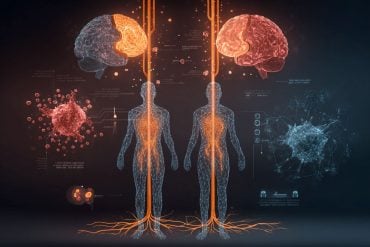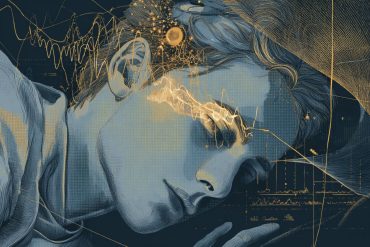Summary: A new study reveals that astrocytes, a type of brain cell, can transform into nerve cells through changes in DNA methylation. Researchers discovered that astrocytes in certain brain regions have a unique methylation pattern, allowing them to generate nerve cells.
This process can be triggered by a lack of blood supply, such as in a stroke, which reprograms astrocytes to form new neurons. The findings could pave the way for new therapies that repair brain damage by stimulating the production of nerve cells.
Key Facts:
- Astrocytes can transform into nerve cells via changes in DNA methylation.
- Brain injuries or strokes trigger astrocytes to reprogram and form new neurons.
- Future therapies may target this process to repair brain damage and treat nerve diseases.
Source: DKFZ
Many different types of cells work together in the brain. In humans, nerve cells (neurons) make up less than half of the cells. The rest are called “glia”. The most common glial cells are astrocytes. They supply the neurons with nutrients, form part of the blood-brain barrier, regulate the synapses and support the immune cells.
However, a small proportion of astrocytes are able to produce nerve cells and other types of brain cells. These special astrocytes are therefore also known as brain stem cells. Brain stem cells and ordinary astrocytes hardly differ in their gene expression, i.e. in the activity of their genes.

“How they can perform such different functions and what makes up the stem cell properties was previously completely unclear,” explains Ana Martin-Villalba, stem cell researcher at the DKFZ.
Methylation is the key
To solve this puzzle, the teams led by Martin-Villalba and Simon Anders (University of Heidelberg) isolated both ordinary astrocytes and brain stem cells from one of the regions of the brain where young neurons still develop in adult mice, the “ventricular-subventricular zone” (vSVZ).
The researchers analyzed gene expression at the level of individual cells using mRNA sequencing as well as the patterns of methylation (“methylome”) in the entire genome. They used a specially developed tool to analyze the methylation data*.
DNA methylation refers to chemical “markers” with which the cell can switch off unused parts of its DNA. Methylation is therefore crucial for the identity of the cells.
During this study, the stem cell experts noticed that brain stem cells have a special DNA methylation pattern that distinguishes them from other astrocytes.
“Unlike normal astrocytes, certain genes are demethylated in brain stem cells that are otherwise only used by nerve precursor cells. This allows the brain stem cells to activate these genes in order to produce nerve cells themselves,” explains Lukas Kremer, first author of the current publication.
Co-first author Santiago Cerrizuela adds: “This pathway is denied to ordinary astrocytes, as the required genes are blocked by DNA methylation.”
Lack of blood supply triggers reprogramming of astrocytes to stem cells and increases new nerve formation
Could methylation also be used to convert astrocytes into brain stem cells in other regions of the brain, outside the vSVZ? “This would be an important step for regenerative medicine to repair damaged areas of the brain,” says Ana Martin-Villalba.
Earlier studies had already shown that a lack of blood supply, such as occurs in brain injuries or stroke, increases the number of newborn nerve cells. Do altered methylation profiles play a role in this process?
To investigate this, the researchers interrupted the blood supply to the brain of mice for a short time. As a result, astrocytes with the typical stem cell methylation profile could be detected even outside the vSVZ, as well as an increased number of nerve progenitor cells.
“Our theory is that normal astrocytes in the healthy brain do not form nerve cells because their methylation pattern prevents them from doing so,” explains study head Martin-Villalba.
“Techniques to specifically alter the methylation profile could represent a new therapeutic approach to generate new neurons and treat nerve diseases.”
“The lack of blood supply apparently causes astrocytes in certain areas of the brain to redistribute the methyl marks on their DNA in such a way that their stem cell program becomes accessible. The reprogrammed cells then begin to divide and form precursors for new neurons,” summarizes Simon Anders.
“If we understand these processes better, we may be able to specifically stimulate the formation of new neurons in the future. For example, after a stroke, we could strengthen the brain’s self-healing powers, so that the damage can be repaired”.
Why studies on mice are necessary for this research
Strokes or accidents can lead to damage to the brain that is generally irreparable at present and often has dramatic consequences for those affected. As of today, there is no way to replace lost nerve cells.
The aim of this work is to find ways to stimulate the regeneration of nerves in the adult brain.
This requires a profound understanding of how and under what circumstances brain stem cells can be induced to provide a supply of young nerve cells. To do this, the researchers need to study developmental processes that only take place in the brains of highly developed mammals.
Epigenetic reprogramming cannot be observed in living animals using imaging techniques, but requires studies at the level of individual cells.
The investigations cannot be carried out on cells from the culture dish, as the methylation profile of the astrocytes changes as soon as they are taken into culture, so that the epigenetic reprogramming can no longer be traced.
About this epigenetics and neuroscience research news
Author: Sibylle Kohlstädt
Source: DKFZ
Contact: Sibylle Kohlstädt – DKFZ
Image: The image is credited to Neuroscience News
Original Research: The findings will appear in Nature






